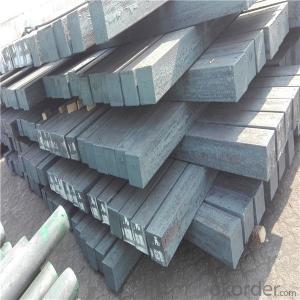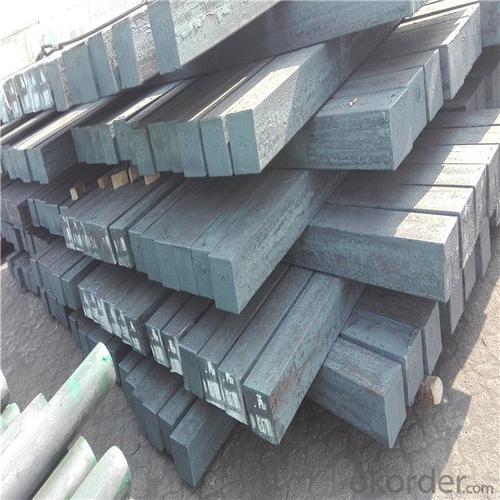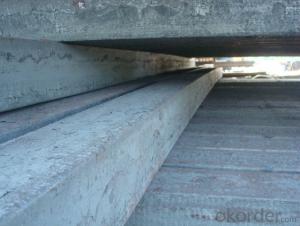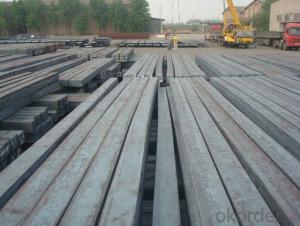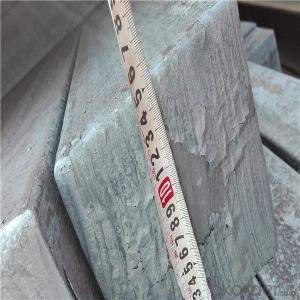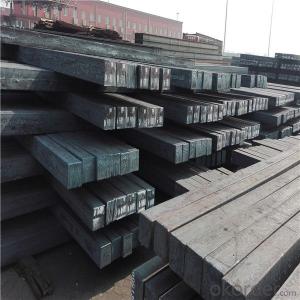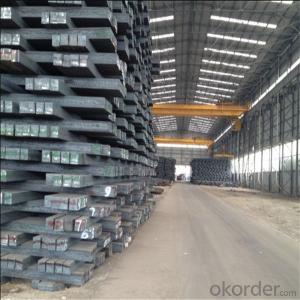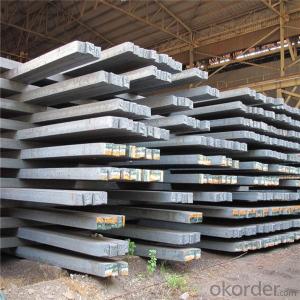150x150 mm Steel Billet -Q215 Grade factory sale directly
- Loading Port:
- China main port
- Payment Terms:
- TT OR LC
- Min Order Qty:
- 1000 m.t.
- Supply Capability:
- 18321 m.t./month
OKorder Service Pledge
OKorder Financial Service
You Might Also Like
Specification
Steel billets have distinct characteristics as compared with already furnished steel bars and products.
Billets have a specific grain structure, which enables the metal to be processed more intricately. Steel
billets are also known for their malleability and ductility, especially when exposed to varying temperatures
during shaping and molding.
The billet is mainly divided into two kinds from the shape:
Slab: cross section width and height of the ratio of the larger, mainly used for rolling plate.
Size :100mm to 165mm
Length:6~12meters
Grade: Q195/Q215/Q235/Q275
Gade:
Standard | C(%) | Mn(%) | S(%) | P(%) | Si(%) |
Q195 | ≤0.12 | ≤0.50 | ≤0.040 | ≤0.035 | ≤0.30 |
Q235 | ≤0.20 | ≤1.40 | ≤0.045 | ≤0.045 | ≤0.35 |
Q275 | ≤0.22 | ≤1.50 | ≤0.045 | ≤0.045 | ≤0.35 |
20MnSi | 0.17-0.25 | 1.2-1.6 | ≤ 0.050 | ≤ 0.050 | 0.40-0.80 |
3SP | 0.14-0.22 | 0.40-0.85 | ≤ 0.050 | ≤ 0.040 | 0.05-0.15 |
5SP | 0.28-0.37 | 0.50-1.00 | ≤ 0.050 | ≤ 0.040 | 0.15-0.30 |
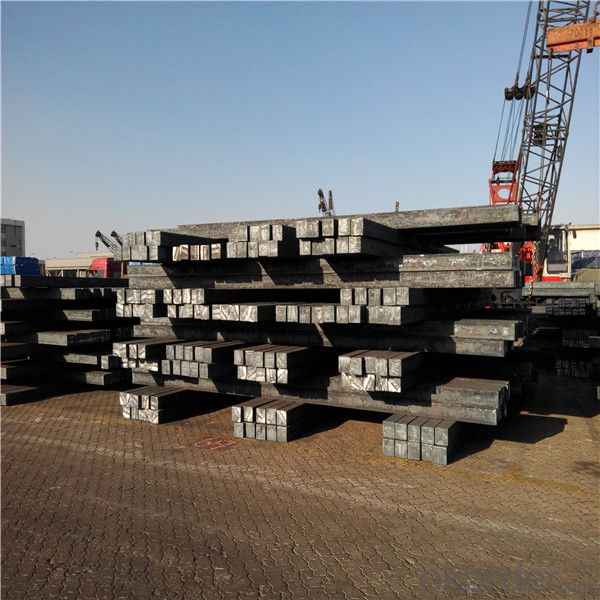
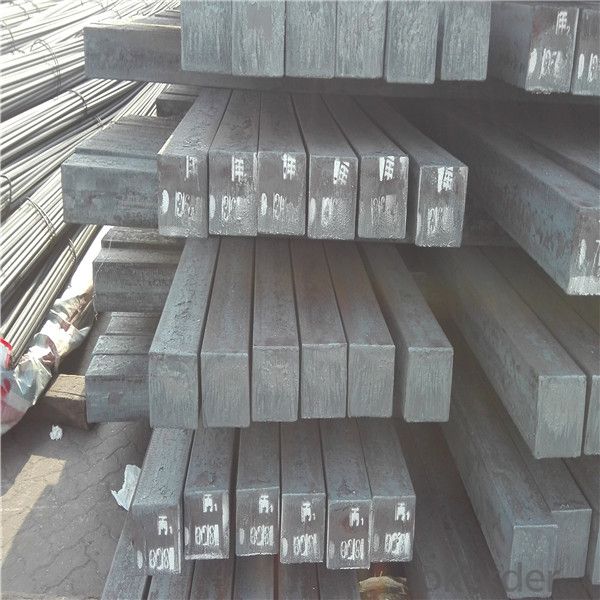

Our service :
We have a plant and professional team to provide our best service, from the start of production until the
loading into the vessel, we have a complete quality follow up procedure, to assure our products arrives to the customer with satisfaction. Welcome new and old customers
to contact us for future business relationships! We will give you a surpise price.
Packing :
Within 30 days
1.Standard export package
2.In bundles with steel strips
3.As the requirements of the customers
FAQ:
Q: What is payment terms?
A: FOB 30% T/T IN ADVANCE AS DEPOSIT AND 70% T/T BEFORE SHIPMENT
CIF and CFR 30% T/T IN ADVANCE AS DEPOSIT AND 70% T/T AS THE COPY OF B/L OR L/C AT SIGHT
Q:How to guarantee the quality of the products?
A:We have established the international advanced quality management system,every link from raw material
to final product we have strict quality test;We resolutely put an end to unqualified products flowing into the market.
At the same time, we will provide necessary follow-up service assurance.
Q:How long can we receive the product after purchase?
A :In the purchase of product within three working days, We will arrange the factory delivery as soon as possible.
The pecific time of receiving is related to the state and position of customers.
- Q: What are the different types of defects that can occur during casting of steel billets?
- During the casting of steel billets, various types of defects may arise, impacting the quality and integrity of the final product. Some commonly encountered defects are as follows: 1. Shrinkage: Shrinkage defects manifest when the metal cools and solidifies unevenly, resulting in voids or shrinkage cavities within the billet. This irregular cooling weakens the structure and diminishes its overall strength. 2. Porosity: Porosity refers to the presence of trapped gas or air bubbles within the billet. This defect can occur due to improper gating or venting, inadequate control of pouring temperature, or the existence of impurities in the molten metal. Porosity can reduce the mechanical properties of the billet and increase its susceptibility to failure. 3. Inclusions: Inclusions denote the presence of non-metallic materials, such as oxides, sulfides, or refractory particles, that become trapped in the billet during casting. These inclusions can weaken the metal, resulting in reduced ductility, increased brittleness, and decreased resistance to fatigue or corrosion. 4. Cold shuts: Cold shuts arise when two streams of molten metal fail to fuse adequately during casting, resulting in a visible line or seam within the billet. Cold shuts can weaken the billet and cause failure under stress. 5. Hot tearing: Hot tearing occurs when the solidifying metal is constrained from contracting, leading to localized cracking or tearing. This phenomenon is typically caused by high thermal stresses or insufficient feeding of the metal during solidification. Hot tearing significantly impacts the structural integrity of the billet. 6. Misruns: Misruns are defects that occur when the molten metal fails to completely fill the mold cavity. This defect can arise due to inadequate pouring temperature, improper gating or venting, or insufficient fluidity of the metal. Misruns result in incomplete, undersized, or malformed billets with reduced mechanical properties. 7. Surface defects: Surface defects encompass surface cracks, scabs, or roughness that may occur during the solidification or cooling process. These defects contribute to increased rejection rates, reduced machinability, and compromised surface finish of the billet. It is of utmost importance to identify and minimize these defects during the casting process to ensure the production of high-quality steel billets with the desired mechanical properties and dimensional accuracy.
- Q: What are the specifications for tool steel billets used in the automotive industry?
- Tool steel billets used in the automotive industry typically have specific specifications to ensure their suitability for various applications. These specifications are crucial to ensure the desired performance and durability of the tool steel in automotive manufacturing processes. One important specification for tool steel billets used in the automotive industry is the chemical composition. The tool steel must have a specific composition of elements such as carbon, chromium, vanadium, and molybdenum, among others. These elements contribute to the steel's hardness, wear resistance, and toughness, which are essential properties for automotive tooling. Additionally, the tool steel billets must possess a specific hardness range. Hardness is measured using various scales such as Rockwell or Brinell, and the desired hardness depends on the intended application. Higher hardness is generally preferred for tools that require high wear resistance, while lower hardness may be suitable for tools that require toughness and impact resistance. Furthermore, the tool steel billets used in the automotive industry must have excellent dimensional stability. This means that the steel should have minimal dimensional changes during heat treatment and manufacturing processes, ensuring the tools maintain their shape and accuracy over time. Another important specification is the machinability of the tool steel. It should be easy to machine and shape into the desired tooling components without excessive tool wear or difficulty. Good machinability allows for efficient production and reduces costs associated with tooling. The tool steel billets used in the automotive industry should also have good thermal conductivity. This property allows the heat generated during manufacturing processes, such as forging or heat treatment, to be effectively dissipated. Good thermal conductivity helps prevent localized overheating and ensures uniform heat distribution throughout the tool, resulting in consistent performance. Lastly, the tool steel billets should be free from defects and impurities. These include cracks, voids, inclusions, or any other imperfections that can compromise the integrity and performance of the tool steel. Quality control measures, such as non-destructive testing, are typically implemented to ensure the billets meet the required standards. In summary, the specifications for tool steel billets used in the automotive industry encompass factors such as chemical composition, hardness, dimensional stability, machinability, thermal conductivity, and overall quality. These specifications ensure that the tool steel meets the specific requirements of automotive tooling applications, providing durability, performance, and reliability in automotive manufacturing processes.
- Q: How are steel billets used in the production of mining components?
- Steel billets play a vital role in the mining component production process. They serve as the initial stage in the manufacturing of diverse mining equipment and components. To begin with, steel billets are melted and cast into specific shapes and sizes to meet the mining industry's requirements. These billets are subjected to extremely high temperatures and then poured into molds to achieve the desired shape. This casting process enables the creation of various mining components like gears, shafts, and valves. Once the steel billets have been cast into the desired shape, they undergo further processing to enhance their strength and durability. This involves employing different techniques such as forging, where the billets are exposed to high pressure and heat to enhance their mechanical properties. Forged steel components are widely used in mining applications due to their exceptional strength and resistance to wear and tear. Additionally, steel billets are frequently machined to attain precise dimensions and finishes necessary for mining components. Machining encompasses cutting, drilling, and shaping the billets using specialized tools and machinery. This step guarantees that the final mining components meet the precise specifications required for efficient and reliable operation in mining environments. In general, steel billets are indispensable in the production of mining components as they serve as the raw material from which these components are manufactured. The versatility and durability of steel make it an ideal choice for mining applications, where equipment is subjected to demanding conditions. By commencing with steel billets and employing various manufacturing processes, mining companies can produce high-quality components that are crucial for the efficient and safe operation of mining activities.
- Q: What are the different heat treatment processes for alloy steel billets?
- There are several different heat treatment processes that can be used for alloy steel billets, depending on the desired properties and intended application of the material. Some of the most common heat treatment processes for alloy steel billets include: 1. Annealing: This process involves heating the billets to a specific temperature and then slowly cooling them, usually in a furnace. Annealing helps to relieve internal stresses and improve the machinability of the alloy steel. 2. Normalizing: Normalizing is similar to annealing, but the cooling process is done in still air instead of a furnace. This process helps to refine the grain structure of the alloy steel and improve its mechanical properties, such as strength and hardness. 3. Quenching and tempering: Quenching involves rapidly cooling the heated alloy steel in a liquid medium, such as oil or water, to achieve high hardness and strength. After quenching, the billets are then tempered by reheating them to a lower temperature, which helps to reduce the brittleness and improve toughness. 4. Precipitation hardening: This process is commonly used for alloy steels that contain elements such as aluminum, copper, or titanium. Precipitation hardening involves a series of heat treatments that cause the alloying elements to form fine particles within the steel, resulting in improved strength and hardness. 5. Case hardening: Case hardening is a surface heat treatment process that is used to increase the hardness of the outer layer of the alloy steel billets. This is achieved by heating the billets in the presence of a carbon-rich atmosphere or by applying a carbon-rich compound to the surface, followed by quenching and tempering. These are just a few of the many heat treatment processes that can be used for alloy steel billets. The specific process chosen will depend on factors such as the alloy composition, desired properties, and intended application of the material. It is important to carefully consider these factors and consult with heat treatment experts to ensure the desired results are achieved.
- Q: Can steel billets be recycled?
- Yes, steel billets can be recycled. Steel is a highly recyclable material, and the recycling process for steel billets is relatively straightforward. When steel billets, which are typically produced through a casting process, are no longer needed or have reached the end of their lifecycle, they can be recycled and transformed into new steel products. The recycling process begins with the collection and sorting of the steel billets. They are then transported to a recycling facility where they are melted down in a furnace. Once melted, impurities are removed, and the resulting molten steel is formed into new billets or other steel products through various shaping and casting techniques. Recycling steel billets not only helps to conserve natural resources and reduce waste but also has significant environmental benefits. The recycling process requires less energy and emits fewer greenhouse gases compared to the production of steel from raw materials. Additionally, recycling steel helps to reduce the demand for mining iron ore, which can have detrimental effects on the environment. Overall, steel billets can be effectively recycled, allowing for the sustainable and responsible use of this versatile material.
- Q: What are the main challenges in the supply chain management of steel billets?
- The main challenges in the supply chain management of steel billets include ensuring efficient transportation and logistics, managing inventory levels to avoid stockouts or excess inventory, dealing with fluctuating demand and production uncertainties, maintaining quality standards throughout the supply chain, and effectively collaborating with suppliers and customers to ensure timely delivery and customer satisfaction.
- Q: Who knows the diamond is?Who knows the diamond is carbon? Is it C60?
- It is also called the diamond diamond, crystal, it is not the molecules themselves, so the formula does not apply to.C said it is only by this kind of carbon elements. While C60 is footballene is another matter, the 60 is because it is a molecular crystal, each molecule consists of 60 carbon.
- Q: Can steel billets be used in the production of energy infrastructure?
- Yes, steel billets can be used in the production of energy infrastructure. Steel is a commonly used material in the construction of power plants, transmission towers, pipelines, and other energy-related structures due to its strength, durability, and resistance to corrosion. Steel billets are the raw form of steel that can be shaped and processed into various components required for energy infrastructure projects.
- Q: Reasons and treatment methods of billet stripping in continuous casting
- even two cold regions can be uniformly cooled, due to uneven thickness of shell, caused by the inconsistent temperature, the shell shrinkage is still uneven, and also there will be the development of. Therefore, the selection of unqualified mold is the main reason causing the removal. Secondly, the cooling effect of the two cooling zone can not be ignored.
- Q: What is the difference between a steel billet and a steel bar?
- A steel billet and a steel bar are both raw materials used in the manufacturing industry, particularly in the production of metal products. However, there are certain differences between the two. 1. Shape and Size: A steel billet is typically a rectangular or square-shaped semi-finished product with a larger cross-section than a steel bar. It is usually produced through continuous casting or hot rolling processes and has a relatively rough and uneven surface. On the other hand, a steel bar is a long and cylindrical-shaped product that is often obtained by further processing the steel billet through processes like hot rolling, cold drawing, or machining. Steel bars have a smoother and more finished surface. 2. Manufacturing Process: Steel billets are generally produced directly from molten steel through continuous casting or by solidifying the liquid steel in molds. This results in a solid block of steel that is later processed into various shapes. Steel bars, however, are obtained from the steel billets through additional manufacturing processes, such as hot rolling, which involves passing the billet through a series of rolling mills to reduce its size and shape it into a bar. 3. Uses and Applications: Steel billets are primarily used as raw material for further processing, such as forging, extrusion, or rolling, to manufacture various end products like bars, rods, wire, pipes, or structural components. Steel bars, on the other hand, are widely used in construction, manufacturing, and engineering industries for applications that require strength, durability, and a consistent shape. They are used as reinforcement in concrete structures, as shafts or axles in machinery, or as components in the automotive industry. In summary, a steel billet is an intermediate product obtained through casting or hot rolling, while a steel bar is a finished product obtained by further processing the billet. The billet has a larger cross-section and rougher surface, while the bar is cylindrical with a smoother surface. Both billets and bars have distinct uses in the manufacturing industry, with billets serving as raw material for various products and bars being utilized in a wide range of applications that require strength and durability.
Send your message to us
150x150 mm Steel Billet -Q215 Grade factory sale directly
- Loading Port:
- China main port
- Payment Terms:
- TT OR LC
- Min Order Qty:
- 1000 m.t.
- Supply Capability:
- 18321 m.t./month
OKorder Service Pledge
OKorder Financial Service
Similar products
Hot products
Hot Searches
Related keywords
